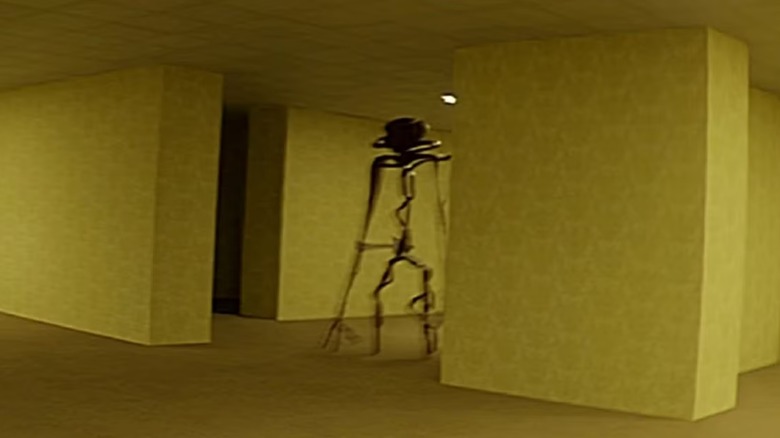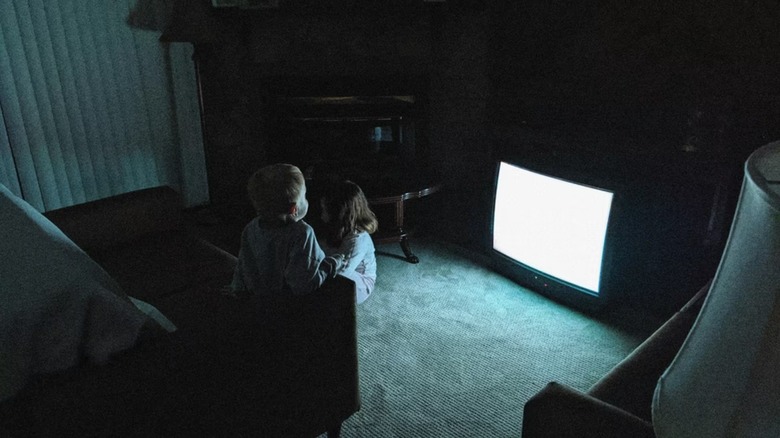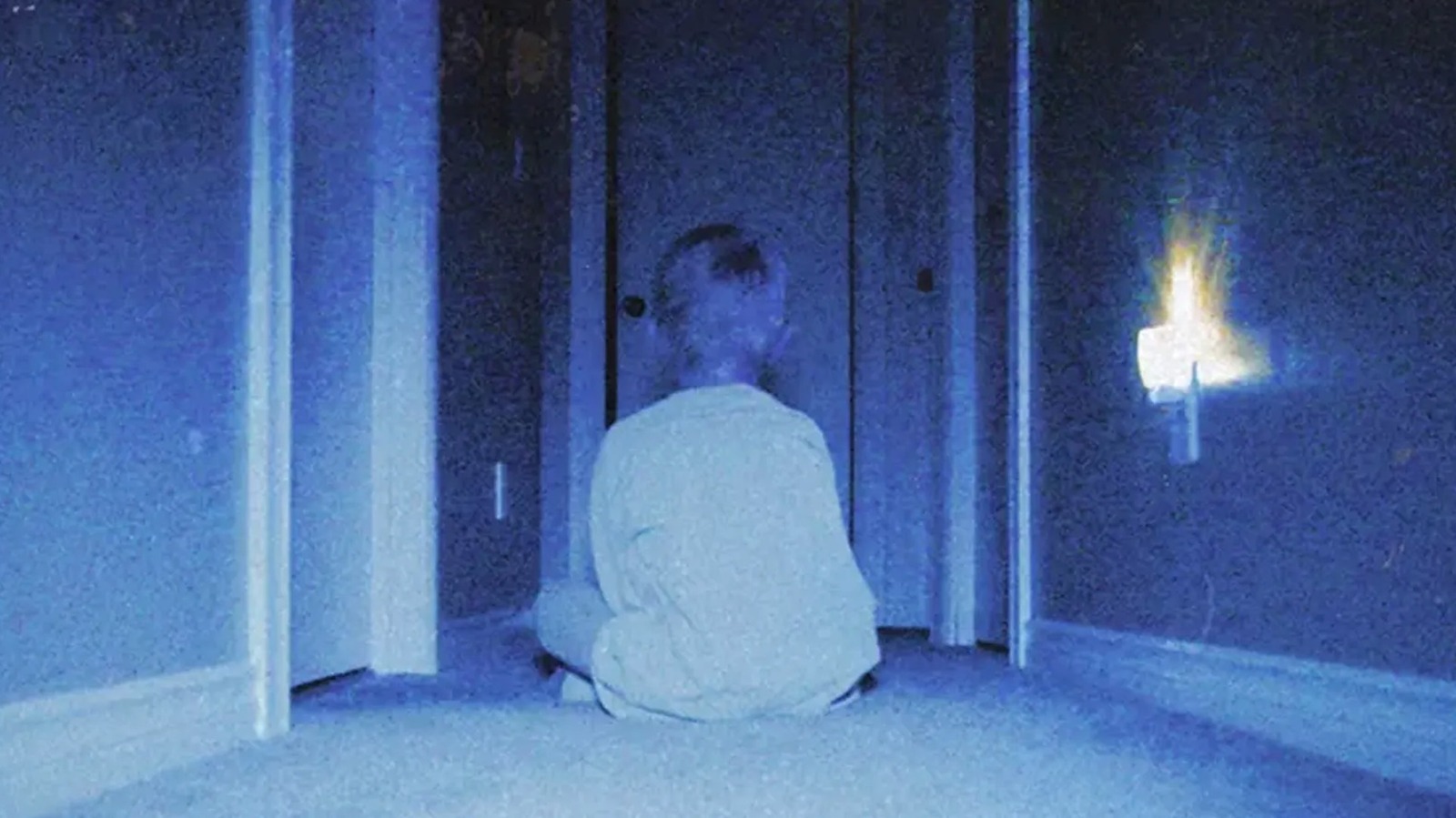How analog horror distorts the familiar to induce fear and anxiety

Kane Pixels/YouTube
It is impossible to talk about analog horror without exploring the mini-world of creepypasta. Creepypasta can be understood as an internet-only rendition of an urban legend, as the latter is directly drawn from myth or folkloric traditions. As these stories originated as anonymous entries on online message boards, their once-nefarious connotations have gradually veered into tongue-in-cheek meme territory. You must’ve heard of the tentacled, unnaturally tall Slenderman, who originated from a 2009 creepypasta about the titular monster abducting and terrorizing its victims in the woods. He’s a pop culture icon now, signifying our collective fear of a faceless, humanoid entity who has the power to hurt people unprovoked. Although the concept of such a monster is familiar (and has been explored extensively in horror media), the Slenderman creepypasta breathes new life into this latent anxiety.
Monsters are not the only manifestations of collective fear, as analog horror also embraces realism to induce a sense of unease. What happens when something as mundane as a yellow-walled office building becomes an unsettling internet phenomenon? This is the core appeal of “The Backrooms,” which began as a sole image on a message board and has now spawned intricate lore, viral short films, a dozen video games, and even an upcoming film adaptation. The concept is simple: you can accidentally “noclip” out of reality and get trapped in the Backrooms, whose endless hallways induce the disorienting experience of being stuck in a liminal space.
Although there are monsters hidden in corners, the fear lies in the subversion of the familiar. An office building is almost always filled with people, so the concept of being alone (and surrounded by beings who are not human) in such a space immediately causes panic. Countless analog horror entries capitalize on this sentiment, using images that are vaguely nostalgic, like an abandoned park or an empty classroom after dark. But there’s something “off” about these familiar spaces, introducing a sense of unreality that starts to feel suffocating.
The subgenre birthed major internet sensations, including Local58 and Petscop

Petscop/YouTube
Analog horror boasts dynamic corners, as the subgenre accommodates stories that take different approaches to horror. Some stories are more heartbreaking than most, like the dreamcore web series “Sins of the Past,” while others tap into classic primal fears, like the deeply disturbing Basswood County series. However, one of the first instances of analog horror that has come to flesh out and define the subgenre is Kris Straub’s “Local 58,” a YouTube series where the titular television channel’s regular programming is repeatedly hijacked by unnerving found footage. Straub’s series was the first to describe itself as analog horror, hence establishing what would be traditionally associated with this unique subgenre.
To call “Local 58” an internet sensation is an understatement. It mimics the news-bulletin format of the “Special Bulletin” variety and subverts it, using segmented videos to set up the horror and then unleash it. Straub cements a defining aspect of the subgenre right off the bat: the twisted appeal of an emergency broadcast, which interrupts the humdrum of our existence to alert us to a danger that is both unpredictable and alien. While these PSAs urge us to remain calm, they continuously heighten the anxiety through subtle context cues, using genre aesthetics like glitches and obsolete tech to drive the point home. “Local 58” also casts suspicion on things we’ve taken for granted, like the moon (!), on which odd messages appear to destabilize our sense of reality.
While a web series immediately signals that it’s fiction (despite being eerily convincing), some internet sensations use analog horror in covert ways to appear concerningly real. Tony Domenico’s “Petscop” is the most successful example of a YouTube “Let’s Play” series claiming authenticity, where the channel owner wades through an obscure, long-lost game that he seems to have stumbled upon. Viewers debated the existence of the game for the longest time, as the surreal, jarring gameplay is fleshed out well enough for one to believe that such a mysterious title exists for a purpose yet unknown.
The combination of Domenico acting as a flesh-and-blood narrator and the game’s indie, ARG-like aesthetics creates a haunting tale about abuse, corruption, and rebirth. I still find myself going back to this gameplay series for more, as Domenico consciously embedded elements that are waiting to be uncovered in the background. The fact that “Petscop” was not identified as fiction until after the series’ completion is testimony to the visceral power of analog horror, which can mimic reality a little too well for our collective comfort.
Skinamarink experiments with analog horror to simulate a nightmarish experience

IFC Midnight
Analog horror has been around for quite some time, but when a filmmaker re-wires the subgenre to create a story that leaves an indelible mark, it warrants in-depth discussion. I’m talking about Kyle Edward Ball’s “Skinamarink,” which rattled (and delighted) horror enthusiasts like a viral, mystifying internet sensation. On paper, it carries all the hallmarks of standard analog horror: grainy visuals, minimal dialogue, deliberate glitches, and an abstract surrealist strand. However, at its heart, “Skinamarink” is the simulation of a childhood nightmare, the kind where you tearfully gasp for air in your sleep but are unable to move or inch toward survival.
/Film’s Witney Seibold penned an extensively brilliant dissection of the nightmarish psychology in “Skinamarink,” so readers willing to jump down this mysterious rabbit hole should absolutely check it out. I had previously highlighted how analog horror warps the familiar/nostalgic to be effective, but “Skinamarink” completely alters our memories associated with childhood innocence and the comfort of living in one’s home. The young children who wander through the darkened hallways of their home in “Skinamarink” do not have the luxury to cling to their parents for safety. The comforting lull of public-domain cartoons on late-night television is repeatedly interrupted by terrifying whispers, and there are no exits, as the doors and windows have inexplicably disappeared.
Ball traps us inside a home that suddenly becomes a liminal space, posing as a gateway to something more insidious than the disembodied voice threatening the children to obey. It embraces every genre gimmick, including fragmented storytelling and a downer ending, but presents these tropes in the most electrifying ways. We know that “Sinkamarink” is fiction, but the horror lies in the vague feeling that you, too, might’ve felt such mind-numbing disorientation as a child. It is liminal analog horror at its finest, where Ball injects discomfort into the familiarity of the beds we sleep on, or the mundane hallway connecting our homey, lived-in spaces.




